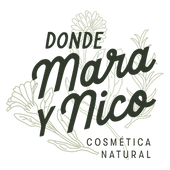1. Check the ingredient list
Common trick: Some brands highlight natural ingredients in big letters on the label, but actually include them in tiny amounts.
How to avoid it:
Look for natural ingredients at the beginning of the list (those listed first are present in higher concentrations).
Avoid products with parabens, sulfates (SLS, SLES), and silicones.
Choose ingredients with botanical names.
2. Don’t be fooled by the packaging
Packaging design can be very misleading.
Common trick: Using green colors, leaf images, and phrases like “with natural extracts” even when the product contains synthetic chemicals.
How to avoid it:
Read the ingredient list carefully.
Choose recyclable or reusable packaging.
Example: A shampoo that says “with aloe vera” but has Sodium Lauryl Sulfate (SLS) as the first ingredient is not truly natural.
3. Research the brand
Understanding a brand’s philosophy and transparency is key to knowing if it’s truly natural.
Common trick: Brands that launch a “natural line” while still producing conventional cosmetics.
How to avoid it:
Read the brand’s story on their website.
Look for reviews from other customers.
Favor small, artisanal brands with ecological values.
Example: Brands that share details about their production process and ingredient sourcing are usually more trustworthy.
Conclusion
Not everything labeled “natural” truly is. Learning to read labels, look for certifications, and analyze ingredients will help you make informed choices and pick products that genuinely benefit your skin and the environment.
Final tip: Don’t be swayed by marketing. Your skin—and the planet—will thank you!

